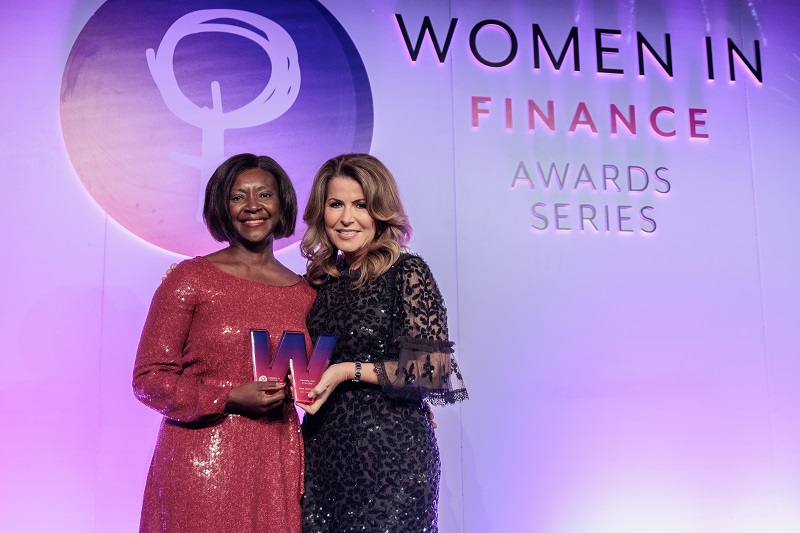Ahead of her appearance at the highly anticipated Women in IT Summit & Awards Asia, Tracy Quah, VP of Marketing at software firm Informatica shares her experience climbing the career ladder as a woman in tech and the unique gender trends taking place in Asia’s fast-paced ecosystem.
In your journey to becoming a female leader, what barriers did you face?
There’s a constant struggle for women to have their ideas and thoughts heard. When I started out working for a multinational company, I naturally felt like a small fish in an ocean and was once passed over for a permanent role due to discrimination from my manager.
Challenges like this can be formidable obstacles and act as a deterrent that makes us feel insecure about our capabilities and therefore fear failure. I overcame these challenges by building my confidence and cultivating more purpose and passion from the work that I was doing.
Having confidence is key to making yourself heard and building a more inclusive working environment. I had at first felt intimidated entering a boardroom full of men, but feeling confident in what you know and what you can do is genuinely the equaliser.
Is gender allyship a topic that’s important in your ecosystem?
Gender allyship and advocacy are critical success factors to advance inclusion in the long run. When men are involved in workplace programmes that promote gender inclusion, 96 % of organisations see progress, compared to only 30% when men are not engaged.
Without the support from men, individualistic approaches to solving gender inequalities overlook systemic structural causes and reinforce the perception that these are “women’s issues” – effectively telling men they don’t need to be involved. This is why gender allyship is crucial and necessary to addressing the gender disparity in not just the tech industry, but employment as a whole.
Women trying to rise up into leadership face cultural and systemic hurdles that make it harder for them to advance, such as unconscious bias. To overcome some of these hurdles women should try to form close connections with other women, who can share experiences. Together, both men and women would then benefit from having a network of well-connected peers and mentors across different groups to encourage progress and growth at the workplace.
What Diversity and Inclusion (D&I) initiatives at Informatica impress you most?
Informatica embraces ‘DATA’ as our company values. “D” stands for “do good” which is to foster an inclusive culture where we treat each other with respect, fairness, and dignity. In 2019, we spearheaded the first Women in Data Leadership (WIDL) programme, targeting female CIOs and CDOs from Fortune 500 and Global 2000 accounts in the region. Today the WIDL programme is still going strong and has reached countries including the Philippines, China, Singapore, Australia, India, and more.
Why should people tune into the upcoming WIT Asia Summit?
People should tune into the upcoming WIT Asia Summit to expose themselves to the diverse range of ideas that come from both men and women who support pro-women issues. These inspiring stories and insights would be key to addressing the gender disparity and driving the need for a more inclusive work environment. The wealth of topics and perspectives shared during the various sessions are informative, educational, and something that should be shared with the broader community.
There, I will be hosting a Masterclass titled ‘The next chapter for women in the new economy’ where I will be sharing more about how women are vastly underrepresented in the global economy and how women can harness their strengths to reshape the future of work. I will also cover what it means to be a leader and how women’s empowerment will be crucial in driving progress in the new economy.
What three tips would you give to tech firms in your region to better recruit and retain women?
The region has made great strides in terms of female representation in technology, outperforming even mature Western economies such as the United States and the United Kingdom. This can be attributed to the industry’s targeted recruiting practices, openness to flexible work arrangements, and the growing emphasis on diversity and inclusion. However, more can be done. It takes continuous effort and perseverance to drive real change and progress in gender diversity. These are my three tips:
Establish a structured programme to increase women’s representation; the initiatives for this programme should commit to a gender diversity agenda with concrete goals like making it a business imperative, creating inclusive expectations, and ensuring ongoing training in unconscious bias. This would create awareness to spark interest in the tech career opportunities for women and cultivate the careers of women in the organisation.
Expand the recruitment criteria; companies should work to expand their talent pool by looking beyond pure technology profiles. Women with different backgrounds can contribute to an organisation’s growth and success.
Start at the top; the presence of women in high leadership positions will ensure the development of role models and informal mentorships, both of which are critical facilitators for other women to imagine a long-term career in technology.
In the west, there’s still a disconnect between women and STEM degrees and careers, is this an issue in your region?
Earlier this year a study found that just 58% of women who graduate with STEM degrees or diplomas go on to have related careers. The findings showed that a proportion of women did not feel they belong in STEM-related fields of work.
Across the region, however, we are seeing a collective effort by different countries such as Malaysia, Singapore, and the Philippines encouraging more women to explore STEM-related subjects and opportunities. This includes the development of gender-sensitive guidelines on curricula, technical training, and workforce readiness programmes, as well as education programmes to encourage and empower women to pursue STEM education and careers.
Is tech a sector that you believe women can pivot into from other sectors?
Contrary to popular belief, a STEM degree is not required to seek a career in technology. It is definitely an industry that women can pivot to from other sectors as research has shown that 60% of women in tech did not study computing in university. In Southeast Asia, the number of women in tech is higher than the global average indicating a massive opportunity within the industry, regardless of gender or cultural background, but the community needs to work collectively to address this.
What does inclusive leadership look like to you?
Inclusive leaders are open to change and genuinely care about their employees as people, respecting and welcoming all differences. To me, inclusive leadership means treating all team members with fairness and respect, and understanding what makes individuals unique, ensuring that they feel connected to the team.
Are leadership styles changing in your region?
The power of empathy helps leaders to understand others’ needs, especially during unprecedented situations like COVID-19. Failing to show empathy can negatively impact business reputation, as well as deter candidates from joining a company.
In the ASEAN region, for example, we are seeing an increase of women in senior management positions and this is likely driving a more empathetic approach as women possess distinguishing traits like humility, self-awareness, self-control, moral sensitivity, and emotional intelligence compared to men, making them more responsive to social and personal issues that affect organisations.
To find out more about the groundbreaking Women in IT Summit and Awards series, click here.
In this article, you learned that:
- In the ASEAN region, there is an increase of women in senior management positions in tech.
- When men are involved in workplace programmes that promote gender inclusion, 96 % of organisations see progress.
- Some women don’t feel suited to a tech career despite having related academic qualifications, showing that employers must work harder to recruit them and make them feel they belong.









